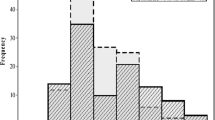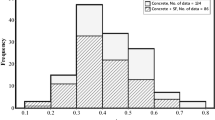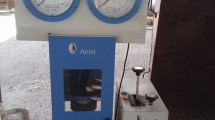Abstract
This research aims at investigating the effect of adding Fly ash (FA) and Silica Fume (SF), water/cement ratio (w/c), and curing time (t) on the compressive strength (CS), flexural strength (FS) and tensile strength (TS) of normal strength concrete (NSC) high strength concrete (HSC) up to 90 days of curing. This research mainly aims to investigate the effect of adding Fly ash (FA) and Silica Fume (SF). Statistical analysis and modeling based on the collected data from different research studies were performed in this research. The w/c ratio for concrete, modified with fly ash (up to 80%) and the concrete modified with silica fume (up to 45%) was ranged between 0.19–0.87, 0.25–0.55, and 0.2–0.80, respectively. The compressive, flexural, and tensile strengths ranges for concrete were 10.5–81.9 MPa, 2.6–9.9 MPa, and 0.41–6.01 MPa, for concrete modified with FA were 13.8–79.9 MPa, 2.53–10.4 MPa, and 0.30–6.5 MPa and for concrete modified with SF were 2.9—99.3 MPa, 3.8–11.9 MPa, and 1.06 –6.6 MPa respectively. The compressive strength was correlated very well to the flexural and tensile strength. Based on the coefficient of determination (R2) and root mean square error (RMSE) the compressive strength, flexural strength, and tensile strength of concrete as a function of w/c ratio, FA content, SF content and curing time quantified very well using nonlinear (NLM) relationship. Based on the NLM parameters, the effect of FA and SF were less than w/c ratio and curing time on the mechanical strength of modified concrete in different strength ranges.












Similar content being viewed by others
References
Amudhavalli NK, Mathew J (2012) Effect of silica fume on strength and durability parameters of concrete. Int J Eng Sci Emerg Technol 3(1):28–35
Nath P, Sarker P (2011) Effect of fly ash on the durability properties of high strength concrete. Proced Eng 14:1149–1156
Elshekh AEA, Shafiq N, Nuruddin MF, Fathi A (2013) Mechanical properties of high strength concrete using fly ash. In: 2013 IEEE business engineering and industrial applications colloquium (BEIAC), pp 306–310. IEEE
Burhan L, Ghafor K, Mohammed A (2019) Modeling the effect of silica fume on the compressive, tensile strengths and durability of NSC and HSC in various strength ranges. J Build Pathol Rehabil 4(1):19
Oner A, Akyuz S, Yildiz R (2005) An experimental study on strength development of concrete containing fly ash and optimum usage of fly ash in concrete. Cem Concr Res 35(6):1165–1171
Umar HM, Naseer S, Sohail MR, Hussain M (2014) Experiemental study on strength of concrete using silica fumes as supplementary cementitious material. In: First international conference on emerging trends in engineering, management and sciences
Ngo SH, Huynh TP, Le TTT, Mai NHT (2018) Effect of high loss on ignition-fly ash on properties of concrete fully immersed in sulfate solution. In: IOP Conference series: materials science and engineering, vol 371, no. 1, pp 012007. IOP Publishing
Güneyisi E, Gesoğlu M, Karaoğlu S, Mermerdaş K (2012) Strength, permeability and shrinkage cracking of silica fume and metakaolin concretes. Constr Build Mater 34:120–130
Nochaiya T, Wongkeo W, Chaipanich A (2010) Utilization of fly ash with silica fume and properties of Portland cement–fly ash–silica fume concrete. Fuel 89(3):768–774
Bhanja S, Sengupta B (2005) Influence of silica fume on the tensile strength of concrete. Cem Concr Res 35(4):743–747
Nili M, Afroughsabet V (2010) Combined effect of silica fume and steel fibers on the impact resistance and mechanical properties of concrete. Int J Impact Eng 37(8):879–886
Srivastava V, Kumar R, Agarwal VC, Mehta PK (2014) Effect of silica fume on workability and compressive strength of OPC concrete. J Environ Nanotechnol 3(3):32–35
Sabet FA, Libre NA, Shekarchi M (2013) Mechanical and durability properties of self-consolidating high performance concrete incorporating natural zeolite, silica fume and fly ash. Constr Build Mater 44:175–184
Yazici Ş, Arel HŞ (2012) Effects of fly ash fineness on the mechanical properties of concrete. Sadhana 37(3):389–403
Mazloom M, Ramezanianpour AA, Brooks JJ (2004) Effect of silica fume on mechanical properties of high-strength concrete. Cem Concr Compos 26(4):347–357
Ghafor K, Qadir S, Mahmood W, Mohammed A (2020) Statistical variations and new correlation models to predict the mechanical behaviour of the cement mortar modified with silica fume. Geomech Geoeng. https://doi.org/10.1080/17486025.2020.1714083
Mohammed A, Rafiq S, Mahmood W, Noaman R, Ghafor K, Qadir W, Kadhum Q (2020) Characterization and modeling the flow behavior and compression strength of the cement paste modified with silica nano-size at different temperature conditions. Constr Build Mater 257:119590
Giaccio G, de Sensale GR, Zerbino R (2007) Failure mechanism of normal and high-strength concrete with rice-husk ash. Cem Concr Compos 29(7):566–574
Sata V, Jaturapitakkul C, Kiattikomol K (2007) Influence of pozzolan from various by-product materials on mechanical properties of high-strength concrete. Constr Build Mater 21(7):1589–1598
Poon CS, Lam L, Wong YL (2000) A study on high strength concrete prepared with large volumes of low calcium fly ash. Cem Concr Res 30(3):447–455
Atiş CD (2003) Accelerated carbonation and testing of concrete made with fly ash. Constr Build Mater 17(3):147–152
Ismail MS, Waliuddin AM (1996) Effect of rice husk ash on high strength concrete. Constr Build Mater 10(7):521–526
Zhang MH, Lastra R, Malhotra VM (1996) Rice-husk ash paste and concrete: some aspects of hydration and the microstructure of the interfacial zone between the aggregate and paste. Cem Concr Res 26(6):963–977
Lam L, Wong YL, Poon CS (1998) Effect of fly ash and silica fume on compressive and fracture behaviors of concrete. Cem Concr Res 28(2):271–283
McCarthy MJ, Dhir RK (2005) Development of high volume fly ash cements for use in concrete construction. Fuel 84(11):1423–1432
Güneyisi E, Gesoğlu M, Özturan T (2004) Properties of rubberized concretes containing silica fume. Cem Concr Res 34(12):2309–2317
Wu JH, Pu XC, Liu F, Wang C (2006) High performance concrete with high volume fly ash. In Key engineering materials. Trans Tech Publications Ltd, Cham, pp 470–478
Ganesan K, Rajagopal K, Thangavel K (2008) Rice husk ash blended cement: assessment of optimal level of replacement for strength and permeability properties of concrete. Constr Build Mater 22(8):1675–1683
Khatib JM (2008) Performance of self-compacting concrete containing fly ash. Constr Build Mater 22(9):1963–1971
Behnood A, Ziari H (2008) Effects of silica fume addition and water to cement ratio on the properties of high-strength concrete after exposure to high temperatures. Cem Concr Compos 30(2):106–112
Mahmud HB, Malik MFA, Kahar RA, Zain MFM, Raman SN (2009) Mechanical properties and durability of normal and water reduced high strength grade 60 concrete containing rice husk ash. J Adv Concr Technol 7(1):21–30
Gastaldini ALG, Isaia GC, Hoppe TF, Missau F, Saciloto AP (2009) Influence of the use of rice husk ash on the electrical resistivity of concrete: a technical and economic feasibility study. Constr Build Mater 23(11):3411–3419
Givi AN, Rashid SA, Aziz FNA, Salleh MAM (2010) Assessment of the effects of rice husk ash particle size on strength, water permeability and workability of binary blended concrete. Constr Build Mater 24(11):2145–2150
Safiuddin M, West JS, Soudki KA (2010) Hardened properties of self-consolidating high performance concrete including rice husk ash. Cem Concr Compos 32(9):708–717
Marikunte SS, Nacer S (2012) Interaction of silica fume and water content on strength and permeability of concrete, no. 12–1733
Srivastava V, Kumar R, Agarwal VC, Mehta PK (2012) Effect of silica fume and metakaolin combination on concrete. Int J Civ Struct Eng 2(3):893–900
Sonebi M (2004) Medium strength self-compacting concrete containing fly ash: modelling using factorial experimental plans. Cem Concr Res 34(7):1199–1208
Demirboğa R (2007) Thermal conductivity and compressive strength of concrete incorporation with mineral admixtures. Build Environ 42(7):2467–2471
Khedr SA, Idriss AF (1995) Resistance of silica-fume concrete to corrosion-related damage. J Mater Civ Eng 7(2):102–107
Sabir BB (1997) Mechanical properties and frost resistance of silica fume concrete. Cem Concr Compos 19(4):285–294
Alexander MG, Magee BJ (1999) Durability performance of concrete containing condensed silica fume. Cem Concr Res 29(6):917–922
Zain MFM, Safiuddin M, Mahmud H (2000) Development of high performance concrete using silica fume at relatively high water–binder ratios. Cem Concr Res 30(9):1501–1505
Bhanja S, Sengupta B (2002) Investigations on the compressive strength of silica fume concrete using statistical methods. Cem Concr Res 32(9):1391–1394
Bhanja S, Sengupta B (2003) Modified water–cement ratio law for silica fume concretes. Cem Concr Res 33(3):447–450
Sobolev K (2004) The development of a new method for the proportioning of high-performance concrete mixtures. Cem Concr Compos 26(7):901–907
Karthikeyan J, Natesan SC (2003) Mechanical properties of high performance concrete using condensed silica fumes. In: Proceedings of the ISHPC, conference: 3rd international PCI/FHWA symposium on high performance concrete, Orlando, USA
Dotto JMR, De Abreu AG, Dal Molin DCC, Müller IL (2004) Influence of silica fume addition on concretes physical properties and on corrosion behaviour of reinforcement bars. Cem Concr Compos 26(1):31–39
Wong HS, Razak HA (2005) Efficiency of calcined kaolin and silica fume as cement replacement material for strength performance. Cem Concr Res 35(4):696–702
Demirboğa R, Gül R (2006) Production of high strength concrete by use of industrial by-products. Build Environ 41(8):1124–1127
Cwirzen A, Penttala V, Vornanen C (2008) Reactive powder based concretes: mechanical properties, durability and hybrid use with OPC. Cem Concr Res 38(10):1217–1226
Shelke V, Pawde P, Shrivastava R (2012) Effect of marble powder with and without silica fume on mechanical properties of concrete. J Mech Civ Eng (IOSRJMCE) 1(1):40–45
Park WS, Kim JE, Eom NY, Kim SW, Kim DG, Cho MS (2013) Mechanical properties of high strength concrete using mineral admixtures. In Applied mechanics and materials, vol 372. Trans Tech Publications Ltd, Cham, pp 235–238
Mahdikhani M, Ramezanianpour AA (2014) Mechanical properties and durability of self-consolidating cementitious materials incorporating nano silica and silica fume. Comput Concrete 14(2):175–191
Vignesh G, Selwyn Babu J (2014) Effect of silica fume on properties of high strength concrete with recycled concrete aggregate. Int J Sci Res. https://doi.org/10.1016/j.hbrcj
Shetti AP, Das BB (2015) Acid, alkali and chloride resistance of early age cured silica fume concrete. In Advances in structural engineering. Springer, New Delhi, pp 1849–1862
Abdelgader HS, El-Baden AS (2015) Effect of silica fume on two-stage concrete strength. In: IOP conference series: materials science and engineering, vol 96, no. 1, pp 012043. IOP Publishing
Hanumesh BM, Varun BK, Harish BA (2015) The mechanical properties of concrete incorporating silica fume as partial replacement of cement. Int J Emerg Technol Adv Eng 5(9):270
Dousti A, Shekarchi M, Tadayon M (2009) Effect of silica fume on chloride binding in concrete. In: 4th International conference on construction materials: performance, innovations and structural implications. pp 715–720
Nagendra V, Sashidhar C, Prasanna Kumar SM, Venkata Ramana N (2015) Size and dosage of micro silica fume behaviour for partial replacement of cement in concrete. IOSR J Mech Civ Eng (IOSR-JMCE) 12:32
Xu W, Lo TY, Wang W, Ouyang D, Wang P, Xing F (2016) Pozzolanic reactivity of silica fume and ground rice husk ash as reactive silica in a cementitious system: a comparative study. Materials 9(3):146
Shabbar R, Nedwell P, Wu Z (2016) Influence of temperature and curing method on strength of autoclaved aerated concrete. In: 36th Cement and concrete science conference, Cardiff, 5th and 6th September
Raghwani JR, Shah D, Bhavsar JK (2016) Performance assessment of pervious concrete by using silica fume. J Civ Eng Environ Technol 3(4):269–273
Haji AA, Parikh KB, Shaikh MA, Jamnu MA (2016) Experimental investigation of pervious concrete with use of fly ash and silica fume as admixture. Int J Innov Eng Sci Res 2(10):154–161
Fakhri M (2016) The effect of waste rubber particles and silica fume on the mechanical properties of roller compacted concrete pavement. J Clean Prod 129:521–530
Alsalman A, Dang CN, Hale WM (2017) Development of ultra-high performance concrete with locally available materials. Constr Build Mater 133:135–145
Ahmad OA (2017) Production of high-performance silica fume concrete. Am J Appl Sci 14(11):1031–1038
Siddique R, Jameel A, Singh M, Barnat-Hunek D, Aït-Mokhtar A, Belarbi R, Rajor A (2017) Effect of bacteria on strength, permeation characteristics and micro-structure of silica fume concrete. Constr Build Mater 142:92–100
Mahawish A, Ibrahim SI, Jawad AH, Othman FM (2017) Effect of adding silicon carbide and titanium carbide nanoparticles on the performance of the cement pastes. J Civ Environ Eng 7(277):2
Patil HS, Dwivedi AK, Chatterjee AM (2017) Optimize properties of concrete with silica fume. MAYFEB J Mater Sci 2:1
Pardhasaradhi K, Krishna KV (2017) Role of parameters on mechanical properties of fly ash based M30 geopolymer concrete and silica fume concrete. Int J Civ Eng Technol 8(6):534–542
Sadati S, Khanzadeh Moradllo M, Shekarchi M (2017) Long-term performance of silica fume concrete in soil exposure of marine environments. J Mater Civ Eng 29(9):04017126
Okoye FN, Prakash S, Singh NB (2017) Durability of fly ash based geopolymer concrete in the presence of silica fume. J Clean Prod 149:1062–1067
Tejaswini C, Narayana SMV, Kumar MTN (2018) An experimental investigation on the relationship between electrical resistivity and mechanical and durability properties of M30 grade concrete. Int Res J Eng Technol 5(09):1–7
Manoharan P, Ravichandran PT, Annadurai R, Rajkumar PK (2019) Studies on properties of concrete using crumb rubber as fine aggregate. In: International conference on intelligent computing and applications. Springer, Singapore, pp 197–203
Güneyisi E, Gesoğlu M, Qays MA, Mermerdaş K, İpek S (2019) Fracture properties of high strength metakaolin and silica fume concretes. In: Proceedings of the conference: 3rd international conference on chemical, civil and environmental engineering (CCEE-2016)
Mahmood W, Mohammed A, Ghafor K (2019) Viscosity, yield stress and compressive strength of cement-based grout modified with polymers. Results Mater 4:100043
Qadir W, Ghafor K, Mohammed A (2019) Regression analysis and Vipulanandan model to quantify the effect of polymers on the plastic and hardened properties with the tensile bonding strength of the cement mortar. Results Mater 1:100011
Abdalla LB, Ghafor K, Mohammed A (2019) Testing and modeling the young age compressive strength for high workability concrete modified with PCE polymers. Results Mater 1:100004
Burhan L, Ghafor K, Mohammed A (2020) Enhancing the fresh and hardened properties of the early age concrete modified with powder polymers and characterized using different models. Adv Civ Eng Mater 9(1):227–249
Mohammed A, Vipulanandan C (2015) Testing and modeling the short-term behavior of lime and fly ash treated sulfate contaminated CL soil. Geotech Geol Eng 33(4):1099–1114
Burhan L, Ghafor K, Mohammed A (2019) Quantification the effect of microsand on the compressive, tensile, flexural strengths, and modulus of elasticity of normal strength concrete. Geomech Geoeng. https://doi.org/10.1080/17486025.2019.1680884
Mohammed A, Vipulanandan C (2019) Smart cement compressive piezoresistive, stress-strain, and strength behavior with nanosilica modification. J Test Eval 47(2):1479–1501
Mohammed AS (2018) Vipulanandan model for the rheological properties with ultimate shear stress of oil well cement modified with nanoclay. Egypt J Pet 27(3):335–347
Vipulanandan C, Mohammed A (2019) Magnetic field strength and temperature effects on the behavior of oil well cement slurry modified with iron oxide nanoparticles and quantified with Vipulanandan models. J Test Eval. https://doi.org/10.1520/JTE20180107
Vipulanandan C, Mohammed A (2017) Rheological properties of piezoresistive smart cement slurry modified with iron-oxide nanoparticles for oil-well applications. J Test Eval 45(6):2050–2060
Mohammed A, Mahmood W, Ghafor K (2020) TGA, rheological properties with maximum shear stress and compressive strength of cement-based grout modified with polycarboxylate polymers. Constr Build Mater 235:117534
Ahmed C, Mohammed A, Saboonchi A (2020) ArcGIS mapping, characterisations and modelling the physical and mechanical properties of the Sulaimani City soils, Kurdistan Region, Iraq. Geomech Geoeng. https://doi.org/10.1080/17486025.2020.1755464
Ahmed C, Mohammed A, Tahir A (2020) Geostatistics of strength, modeling and GIS mapping of soil properties for residential purpose for Sulaimani City soils, Kurdistan Region, Iraq. Model Earth Syst Environ 6:879–893
Ghafor K, Mahmood W, Qadir W, Mohammed A (2020) Effect of particle size distribution of sand on mechanical properties of cement mortar modified with microsilica. ACI Mater J. https://doi.org/10.14359/51719070
Mohammed A, Mahmood W (2019) New Vipulanandan p-q model for particle size distribution and groutability limits for sandy soils. J Test Eval. https://doi.org/10.1520/JTE20180606
Mahmood W, Mohammed A (2020) Hydraulic conductivity, grain size distribution (GSD) and cement injectability limits predicted of sandy soils using Vipulanandan models. Geotech Geol Eng 38(2):2139–2158
Author information
Authors and Affiliations
Corresponding author
Additional information
Publisher's Note
Springer Nature remains neutral with regard to jurisdictional claims in published maps and institutional affiliations.
Rights and permissions
About this article
Cite this article
Rafiq, S.K. Modeling and statistical assessments to evaluate the effects of fly ash and silica fume on the mechanical properties of concrete at different strength ranges. J Build Rehabil 5, 26 (2020). https://doi.org/10.1007/s41024-020-00091-1
Received:
Accepted:
Published:
DOI: https://doi.org/10.1007/s41024-020-00091-1




